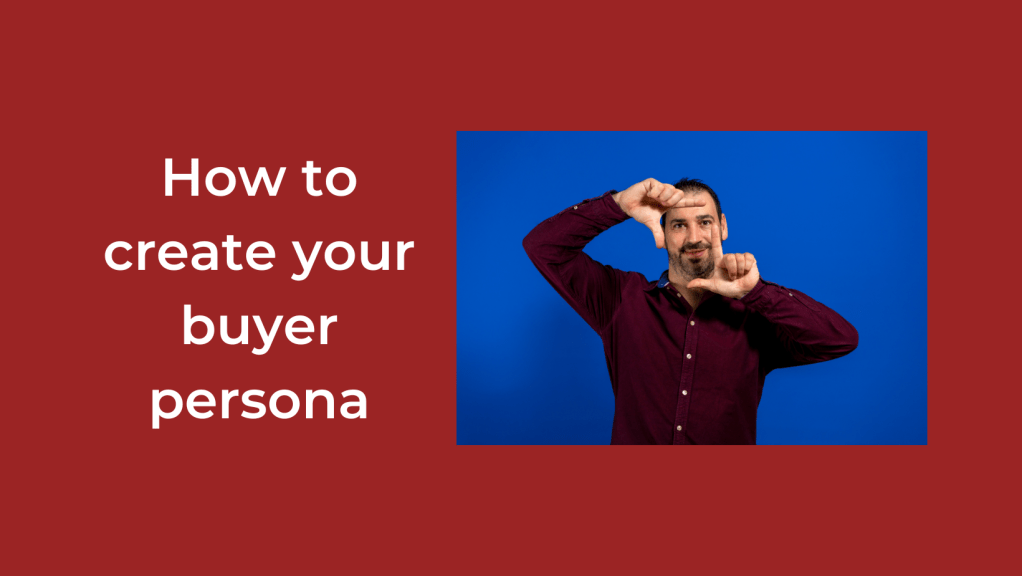Whenever I create content, I think about my target market. And that leads me to the buyer personas I’ve created. I find it so much easier to write any content, be it social media posts or blog posts, because I have a particular person, or group of people in mind.
What is a Buyer Persona?
A buyer persona is a kind of fictional mock-up of your ideal client. This is based, not only on demographic, geographic and psychographic criteria, but also more specific data, such as what motivates them etc.
Each buyer persona you have, (and I recommend at least 3-4), will represent a particular group to whom you are going to aim your advertising, your content and your sales pitch. You couldn’t do individual ideal client or buyer personas, because obviously all your clients are different, but it just helps you to focus your communications.
When you are writing your content, you want to:
- attract potential customers to your website or online shop
- engage, educate, entertain and inspire
- gain their trust
- convert them into paying customers
- retain their custom and hopefully, make them an Ambassador for your business
In order to do all of this, you need to know who your potential customers are, then it’s easier to do all of the above! You need to make sure that you attract the people who match what you have to offer. For example, it’s no good aiming your content at people who hate sport, if you sell football boots!
How do you create this buyer persona?
First of all you need to research your target market, as this will help you create a realistic persona.
Step 1
Look at your current client base and see what your current customers do, what they like and dislike. Are there any similarities between them? Make a note of everything that is similar.
If you have regular customers, you could ring them directly and ask them questions about their buying decisions. Alternatively, if you have an email list, you could send out a survey to your customers asking them things like:
- What kind of content would you like from me?
- Why do you buy my products or use my services?
- Do you have any problems or challenges in your business/life that you’d like me to solve?
- Do you have any questions about my business?
This will then give you a good basis for creating your personas.
Step 2
The next step is to narrow down the information you have even more.
- What are their demographics? For example, age, occupation, marital status, salary)
- What are their geographics? Are they local, regional or in other countries? (You would do one persona for each of these.)
- Psychographics – what are their interests? Do they have any hobbies? For example, are they interested in your products because they’re eco-friendly? Take a close look to see if you can align your products/services to their hobbies or interests.
- What about their behaviours? What do they like to read about? What kind of programmes do they like to watch on TV, Netflix etc?
- How do they learn? This would be important if you are planning to teach something or run a training webinar. Do they learn through being shown how to do something, or through step by step instructions?
- What are their pain points?
- How often are they happy to have emails from you? When do they look at their emails? What attracts them to opening emails?
Step 3
Now you can start to create your separate personas. You can organise the information you’ve gathered into groups, and each of those groups will be a separate buyer persona.
You could have a group that have similar challenges or pain points, for example.
I give my buyer personas a name, as I find it easier to identify with that group and it makes it easier for me to write for them.
For example:
One of my buyer personas is called Jennifer.
- Jennifer is in her late 30s
- She is married with two small children, both at school
- She runs her own small crafting business. She makes craft items that she sells at local markets, and she has an online shop.
- She likes to buy things that are eco-friendly and looking after the environment is important to her.
- She struggles with juggling time in her busy day, so her social media posts, although consistent, don’t always sell her business well. She knows that marketing her business is important, but doesn’t have the time or money to invest a lot in this important aspect. She’d like to know more about how to promote her business and get more clients.
I have six of these specific buyer personas, all made-up people, but all of them have one thing in common – they own their own small business. I target my blogs and my social media content at them, aiming to help them with their marketing. They are loosely based on clients I have or have had in the past.
The importance of buyer personas
Now that you have your different buyer personas, you can tailor everything you write or create to those groups of people. You have put a human element to your buyer personas, so everything you create, from social media post and webinars, to podcasts and video etc., can be targeted at your ideal market.
You’ll find that people will engage more with your content and take more notice of your emails, as they will be specifically targeted to them.
If you need any help with identifying your target market, or pulling together your buyer personas, feel free to email or message me. I offer a free initial consultation.





this article explains me the importance of buyer persona
Thank you Surya. I’m glad it’s helped you see how important it is😀😀
Pingback: How to write a blog post | The Write Way
Pingback: The key elements of digital marketing | The Write Way
Pingback: How to tell a good story for your business | The Write Way
Pingback: How to market an online course | The Write Way
Pingback: The customer journey that wins customers | The Write Way
Pingback: Take your marketing from mediocre to marvellous | The Write Way
Pingback: Content Marketing Strategy – your way to success! | The Write Way